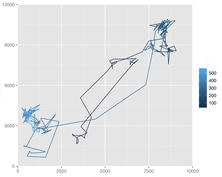Publication trimestrielle du Laboratoire
d'analyse et d'architecture des systèmes du CNRS
The first RF-MEMS devices were presented about 20 years ago. Due to their superior performance in terms of RF, power consumption and cost in comparison with existent technologies (CMOS, PIN...), RF-MEMS was a very promising technology. However, the word reliability has been always the anchor that did not allow them to swim toward the mass-production market. From the beginning very deep studies have been done in order to understand the physics phenomena occurring during lifetime of the device. The main reliability problems found were dielectric charging and contact degradation. At this moment, the research community has to afford the problem from another approach: if you cannot beat the enemy, join him! This new approach is Design for Reliability.The reliability solutions proposed in this work are related with the design and the process steps modification (Design for Reliability). The processes have been classified using its TRL (Technology Readiness Level) which is identified by means of a deep study of each process. Roughly, three different regions have been identified: low TRL (from 1 to 3), medium TRL (from 4 to 6) and high TRL (from 7 to 9). The relationships between adaptability, process flexibility, complexity, failure mechanisms and on-wafer dispersion have been established determining the suitable Design for Reliability strategy to follow.In particular, for LAAS-CNRS process (low TRL) the addition of a metal layer over the movable part is proposed in order to reduce the DOWN capacitance dispersion and to increase its stiffness of the cantilever. For resistive switches the proposed solution is the optimization of an annealing step in order to reduce the deflection due to initial stress which prevents the dimples to contact the transmission line. Both solutions were adopted because the in-wafer and wafer to wafer dispersion was too big.For medium TRL environment (CEA-Leti) the monitoring of the contact resistance was studied under different RF power through the contact. Preliminary results were shown that infer that the lower the number of actuations needed for a stable contact (NAC), the higher the RF power through the contact (PRF). These results were perturbed by the carbon contamination of the contact due to the non-hermetic package. No design for reliability can be applied without the total comprehension of the failure mechanism.For IHP process (high TRL), the fabrication process dispersion origin was identified. The critical parameter to track is the UP and DOWN state capacitance responsible of the RF performance deviation in the initial state. The long-term reliability tests have demonstrated that the failure mechanism is mechanical fatigue. However, by defining a reliability criteria in pristine devices (VPOUT>36 and VPIN - VPOUT





